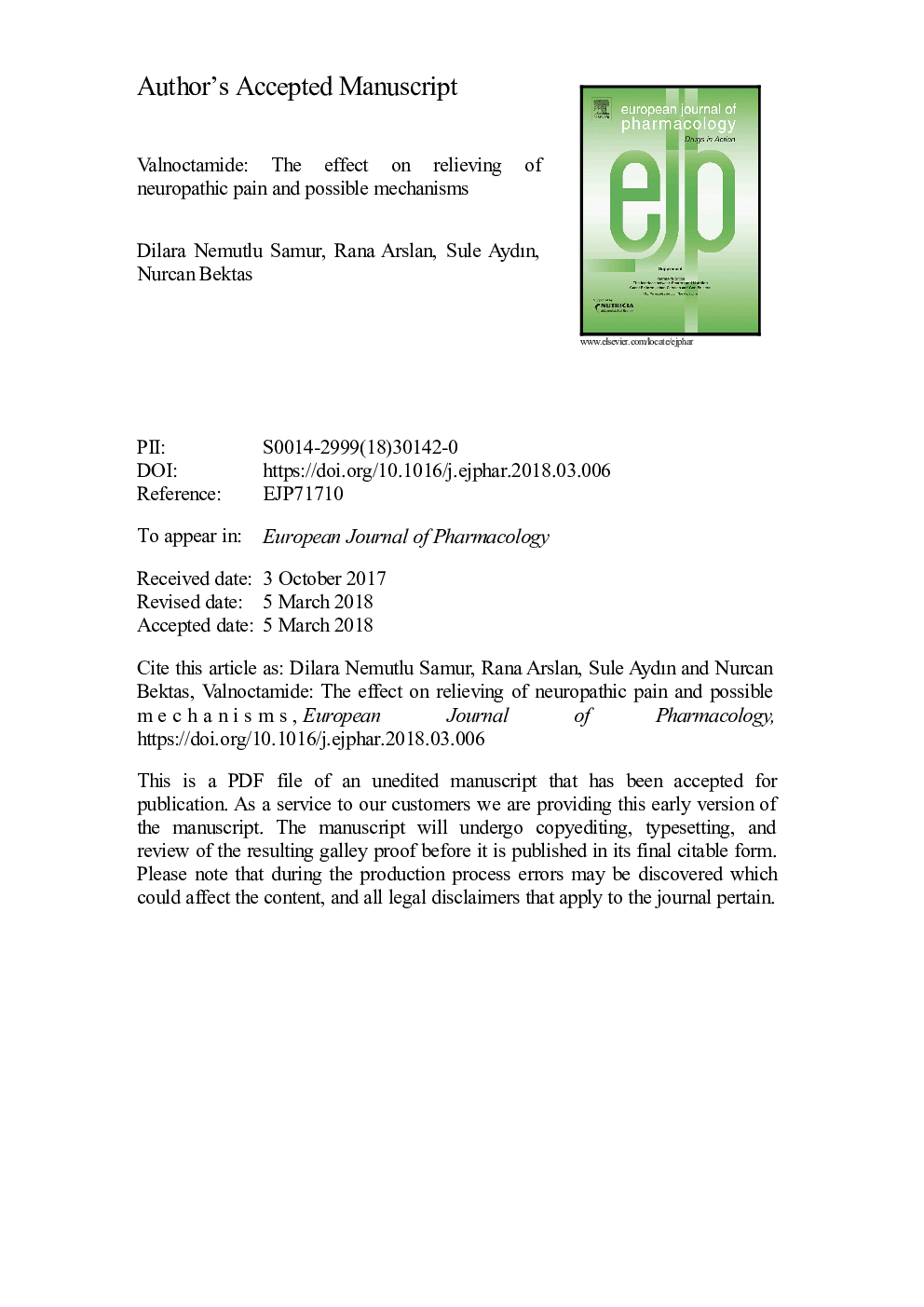| Article ID | Journal | Published Year | Pages | File Type |
|---|---|---|---|---|
| 8529145 | European Journal of Pharmacology | 2018 | 29 Pages |
Abstract
The purpose of this study is to assess the possible anti-allodynic and antihyperalgesic effect of valnoctamide, an amide derivative of valproic acid, at the doses of 40, 70 and 100â¯mg/kg (i.p.) in neuropathic pain model induced by chronic constriction injury in rats, by using dynamic plantar test and plantar test (Hargreaves method), and to evaluate that the possible role of certain serotonin, noradrenergic, opioid and GABAergic receptors by pre-treatment with 1â¯mg/kg (i.p.) ketanserin, yohimbine, naloxone and 0.5â¯mg/kg (i.p.) bicuculline, respectively. 70 and 100â¯mg/kg valnoctamide significantly increased the mechanical and thermal thresholds decreasing with the development of neuropathy and demonstrated anti-allodynic and antihyperalgesic activity. Limited contribution of serotonin 5-HT2A/2C receptors and α2-adrenoceptors, and significant contribution of GABAA and opioid receptors to the anti-allodynic activity have been identified whereas remarkable contribution of opioid receptors and significant contribution of serotonin 5-HT2A/2C receptors, α2-adrenoceptors, GABAA receptors to the antihyperalgesic activity have been identified. Based upon these findings and considering that valnoctamide has safer side-effect profile, it is possible to say that valnoctamide is a potential agent that might be used alone or in combination with the other effective therapies in the alleviating of neuropathic pain.
Keywords
Related Topics
Life Sciences
Neuroscience
Cellular and Molecular Neuroscience
Authors
Dilara Nemutlu Samur, Rana Arslan, Sule Aydın, Nurcan Bektas,
